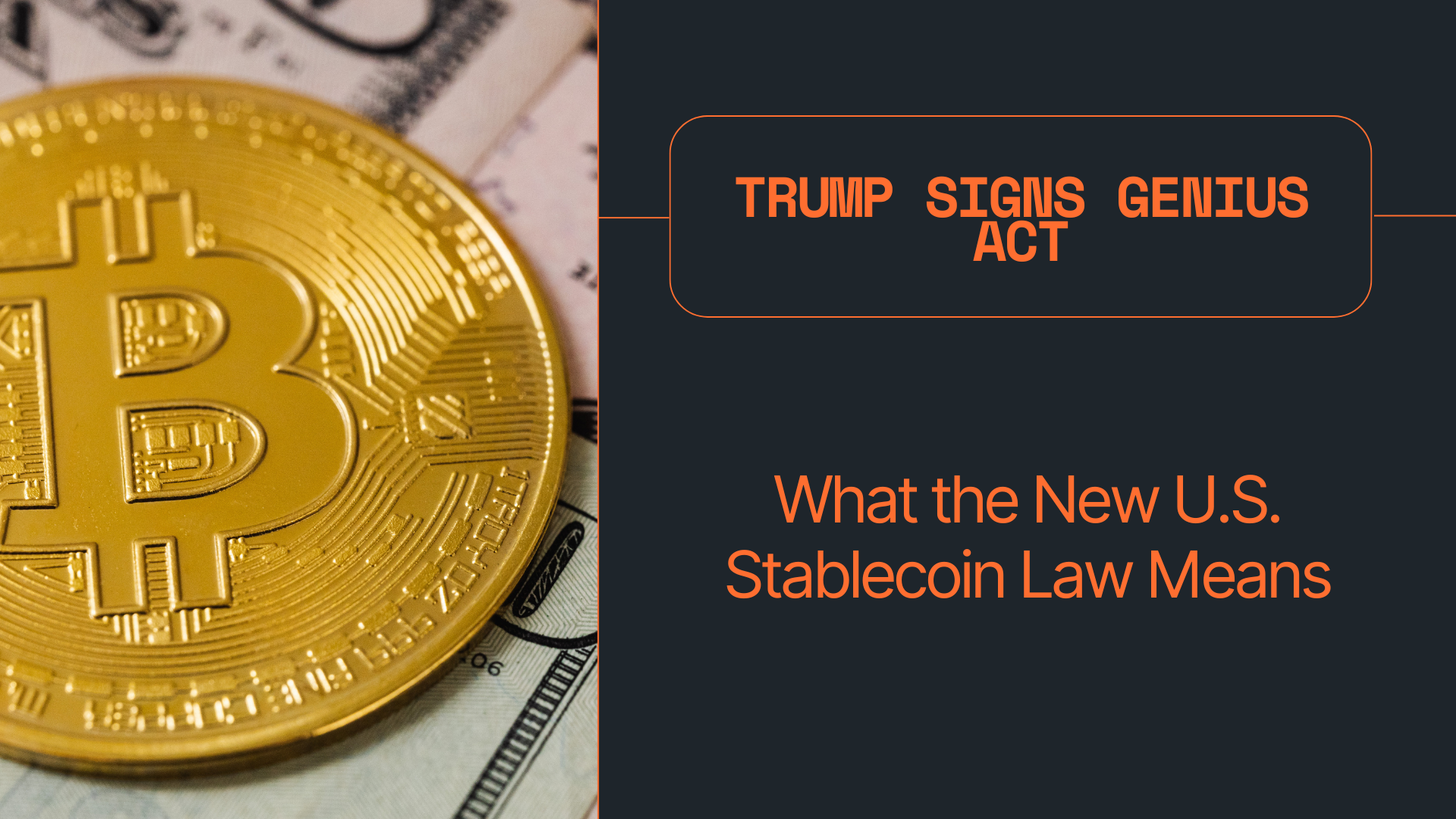
President Donald Trump has signed the Guiding and Establishing National Innovation for U.S. Stablecoins (GENIUS) Act, creating the first comprehensive federal framework for dollar‑pegged crypto tokens. The law, finalized over the weekend after the House cleared it on July 17, requires issuers to hold 100% high‑quality liquid reserves, publish monthly reserve reports, and operate under a new federal licensing regime.
What the Law Actually Does
The GENIUS Act designates a new class of “Permitted Payment Stablecoin Issuers” (PPSIs). Only PPSIs—banks, fintechs or qualified foreign firms—may issue U.S.‑pegged tokens for payments. They must:
- Back every token with cash or short‑term Treasuries held in segregated accounts.
- Provide public, monthly attestations of reserve composition.
- Comply with Bank Secrecy Act/AML rules and maintain robust consumer safeguards.
Crucially, the statute clarifies that payment stablecoins are not securities or commodities, reducing SEC and CFTC turf wars while leaving prudential oversight to banking regulators and a new interagency council.
A Trump–Fed Flashpoint
While the White House hails the act as “long‑overdue” clarity, another battle looms: access to the Federal Reserve. Several issuers now want master accounts to move dollars directly over Fedwire, cutting out correspondent banks. The Fed has approved just one of 39 non‑insured applicants since 2022, setting up a possible clash between a pro‑crypto administration and a cautious central bank.
Market Reaction: Stocks Up, Coins Mixed
Crypto‑linked equities popped on the news. Reuters reported gains across listed exchanges and stablecoin‑heavy firms after the signing, even as major tokens cooled from recent highs. Bitcoin slipped ~0.1% to $118,730 and Ether fell 3.3%, while Solana outperformed. Analysts framed the pullback as profit‑taking after last week’s surge rather than a verdict on the law.
Why This Matters Beyond Crypto Twitter
- Mainstream payments: Clear rules could let retailers, payroll firms, and remittance apps integrate stablecoins without legal guesswork—accelerating 24/7 settlement.
- Treasury demand: Mandated T‑bill backing may channel tens of billions into short‑term U.S. debt, subtly supporting the dollar’s dominance.
- State vs. federal balance: The act creates a dual system—federal licenses for national issuers and coordinated oversight for state‑chartered players—aiming to avoid regulatory arbitrage.
- Legacy networks on notice: Faster, cheaper rails challenge card networks’ interchange economics; some saw their shares dip on passage buzz.
Transition Rules and Deadlines
According to law‑firm summaries and a Congressional Research Service brief, pre‑existing stablecoins can keep operating until July 18, 2028, but new issuers must seek approval promptly. After that date, offering an unlicensed payment stablecoin in the U.S. will be prohibited.
Industry Voices
Executives at Circle and Ripple (fresh from launching a USD product) welcomed the clarity, saying it should “unlock enterprise adoption” and reduce bank de‑risking. Skeptics warn that monthly attestations aren’t audits and want real‑time proof‑of‑reserves on‑chain. Legal analysts also note the ban on “yield‑bearing stablecoins,” which could push savings‑style products offshore.
Next on Capitol Hill: CLARITY and Anti‑CBDC
The House passed two companion bills—CLARITY Act (defining which tokens are commodities vs. securities) and an Anti‑CBDC Act—that still await Senate action. Together, they could settle broader jurisdiction fights and limit a Federal Reserve digital dollar, reinforcing a private‑sector model instead.
Bottom Line
The GENIUS Act doesn’t just legalize stablecoins—it professionalizes them. By demanding bank‑style reserves and disclosures while shielding tokens from securities law, Washington is betting that regulated dollar‑tokens can coexist with (and even strengthen) the traditional financial system. The next question is whether the Fed opens its doors and whether Congress follows through with equally clear rules for the rest of crypto.
For now, stablecoin issuers have marching orders, investors have fewer unknowns, and the U.S. has finally drawn a federal line in the digital‑dollar sand.